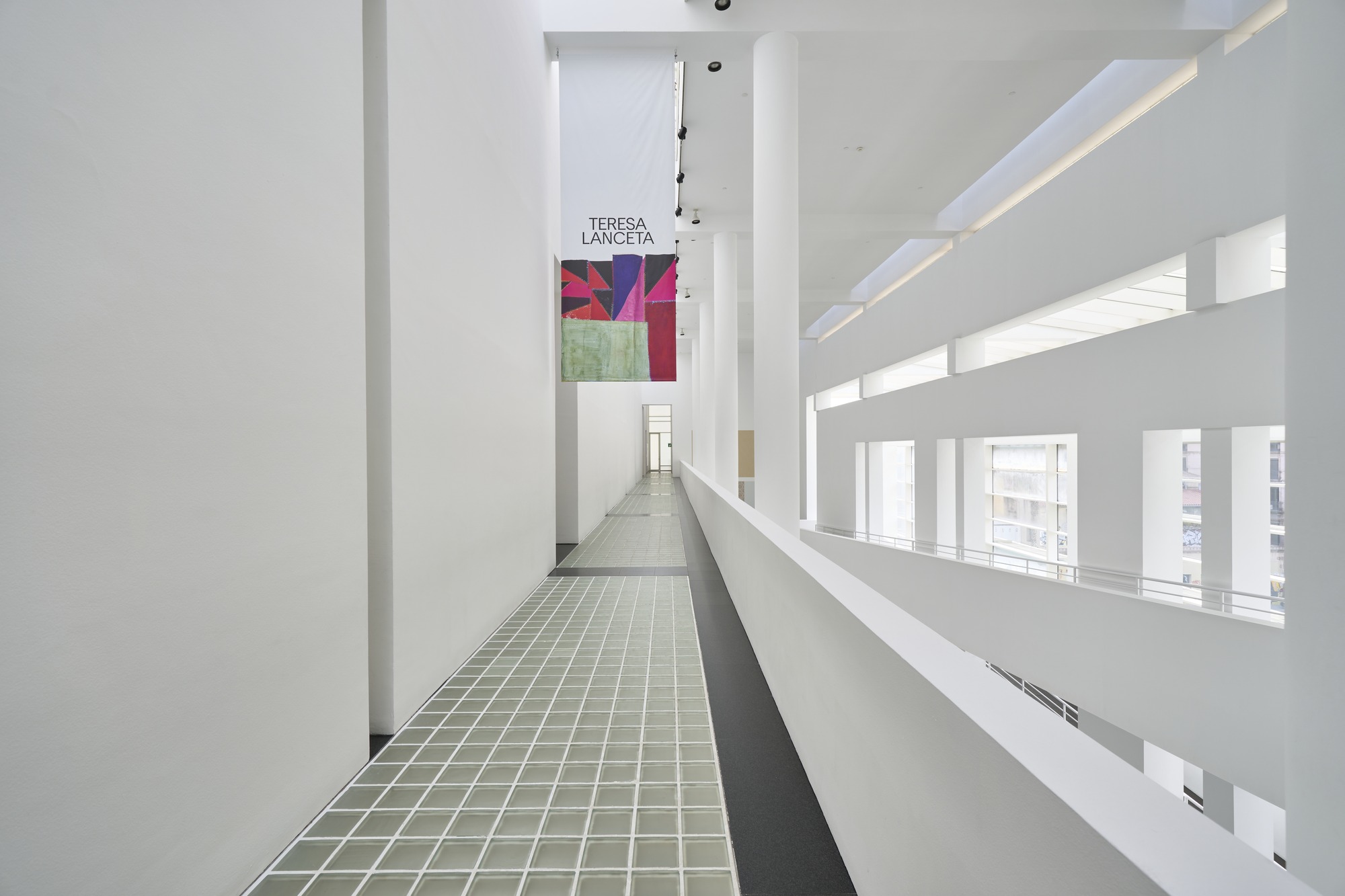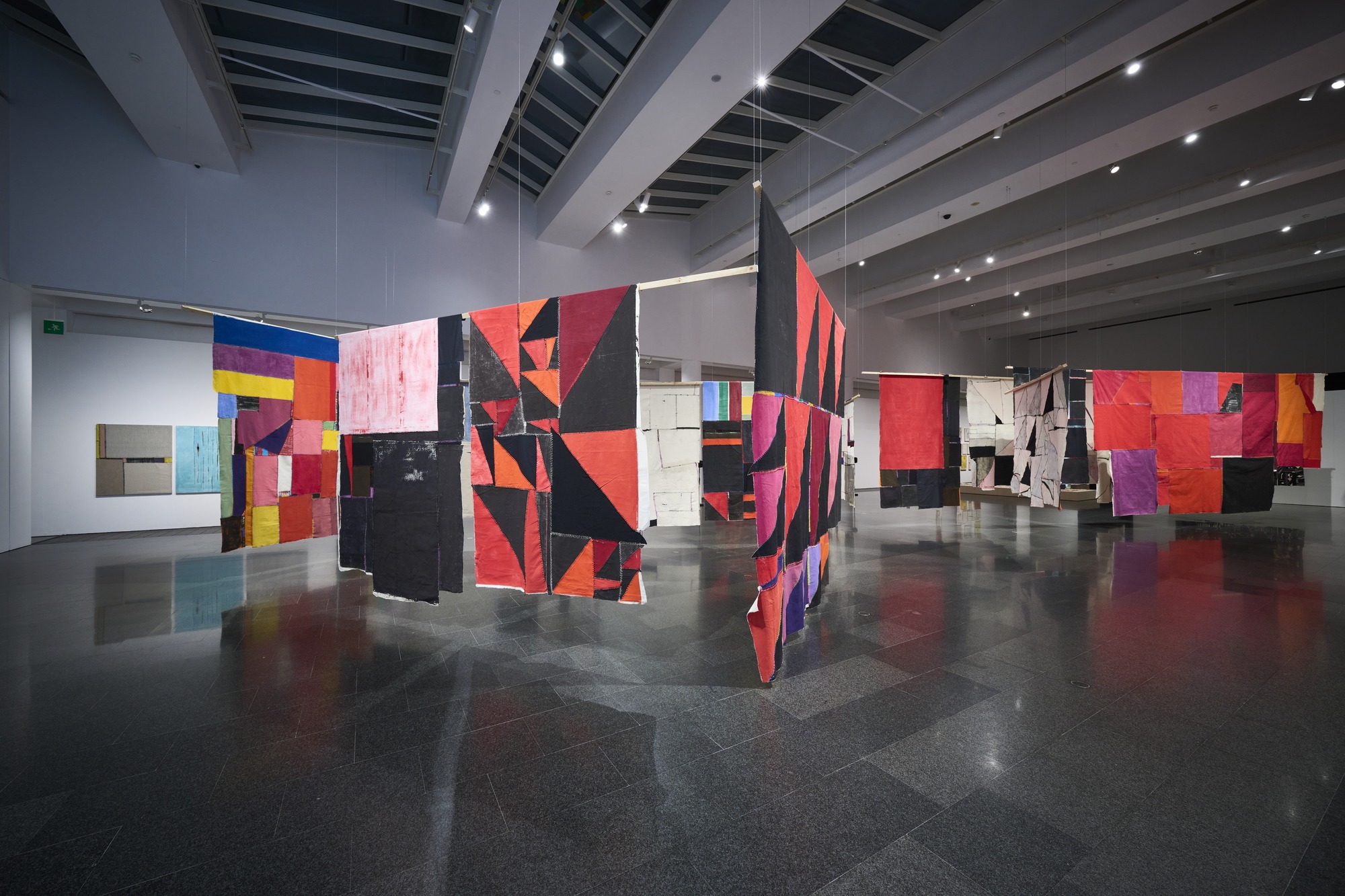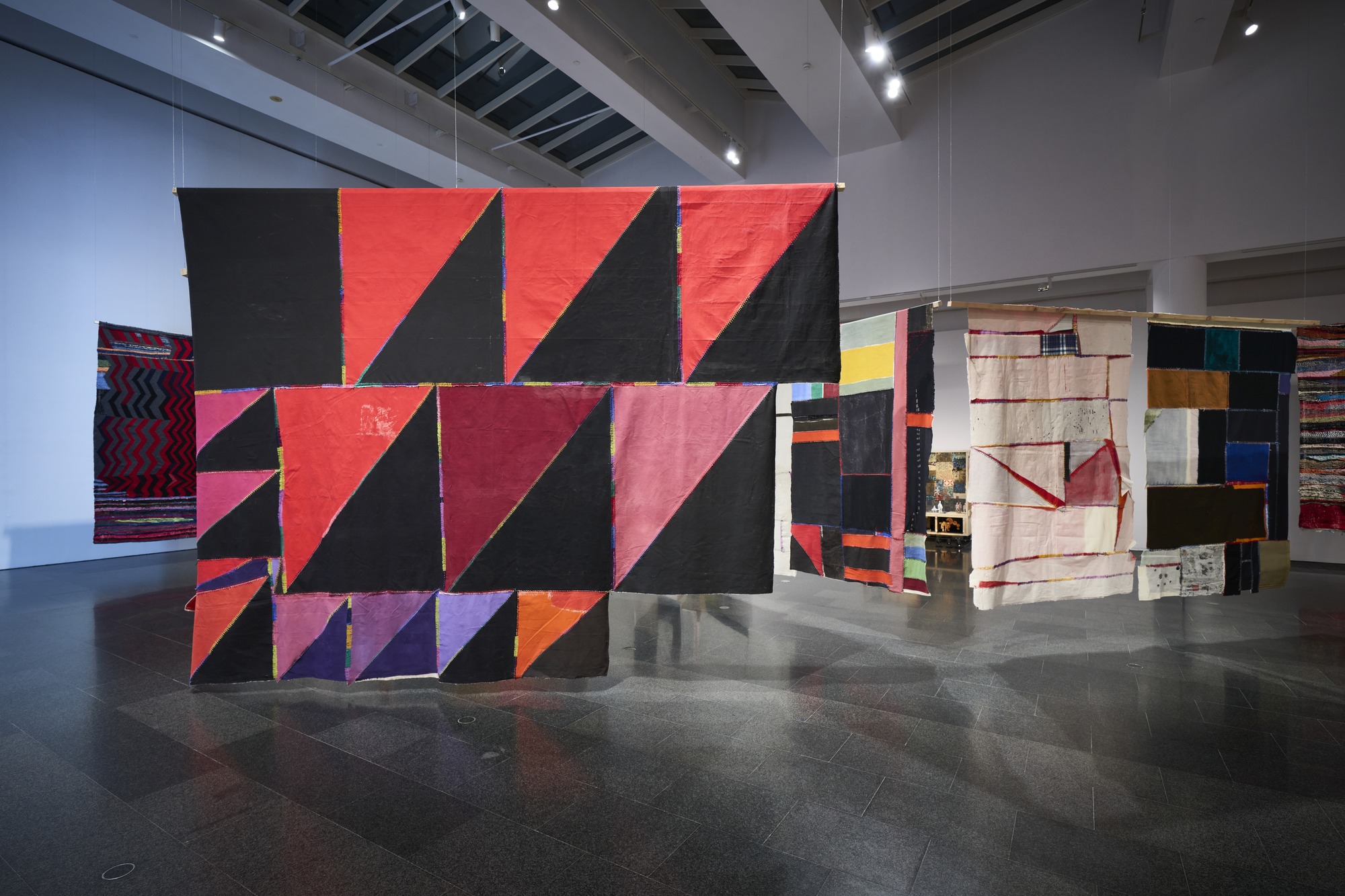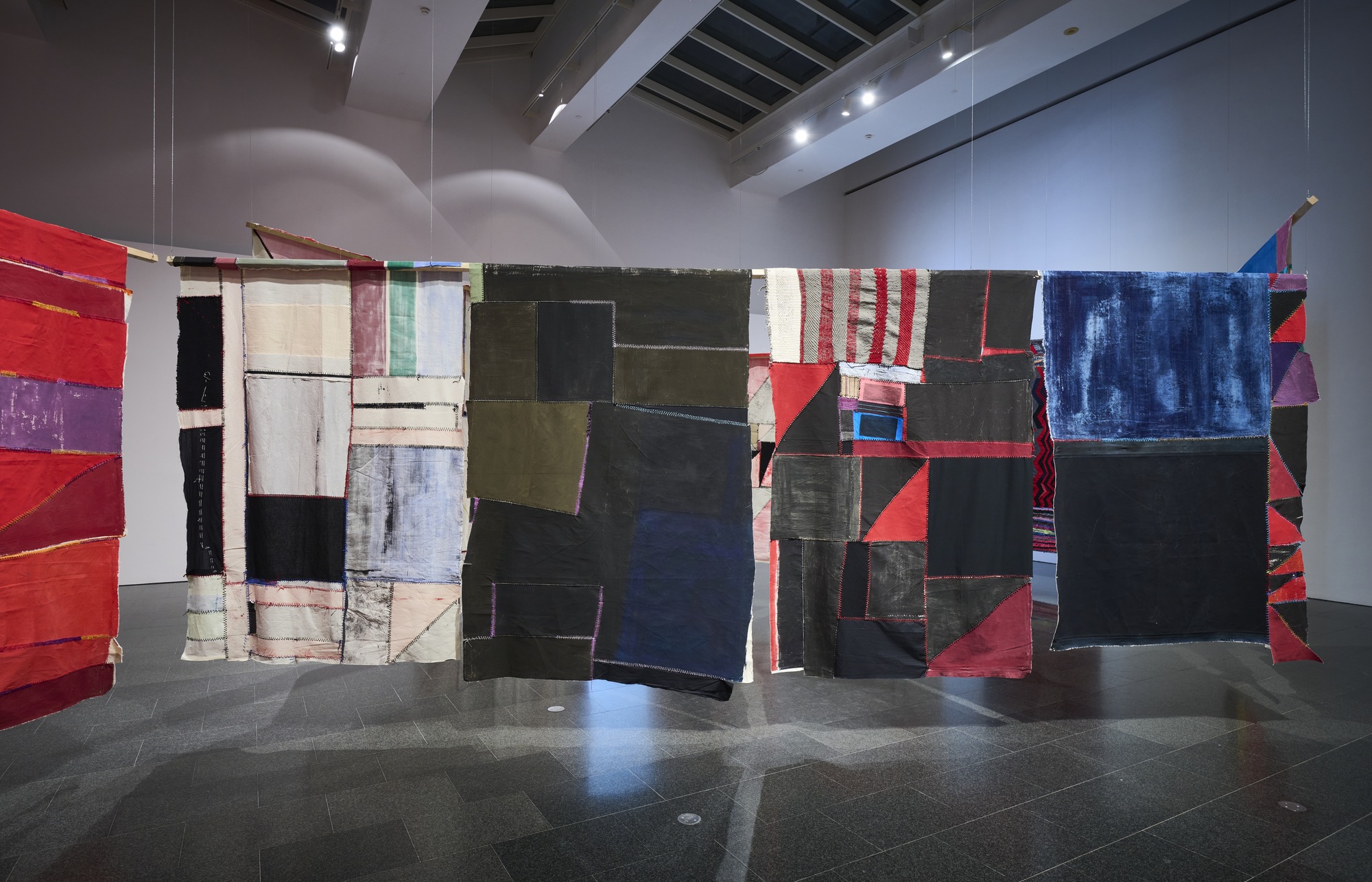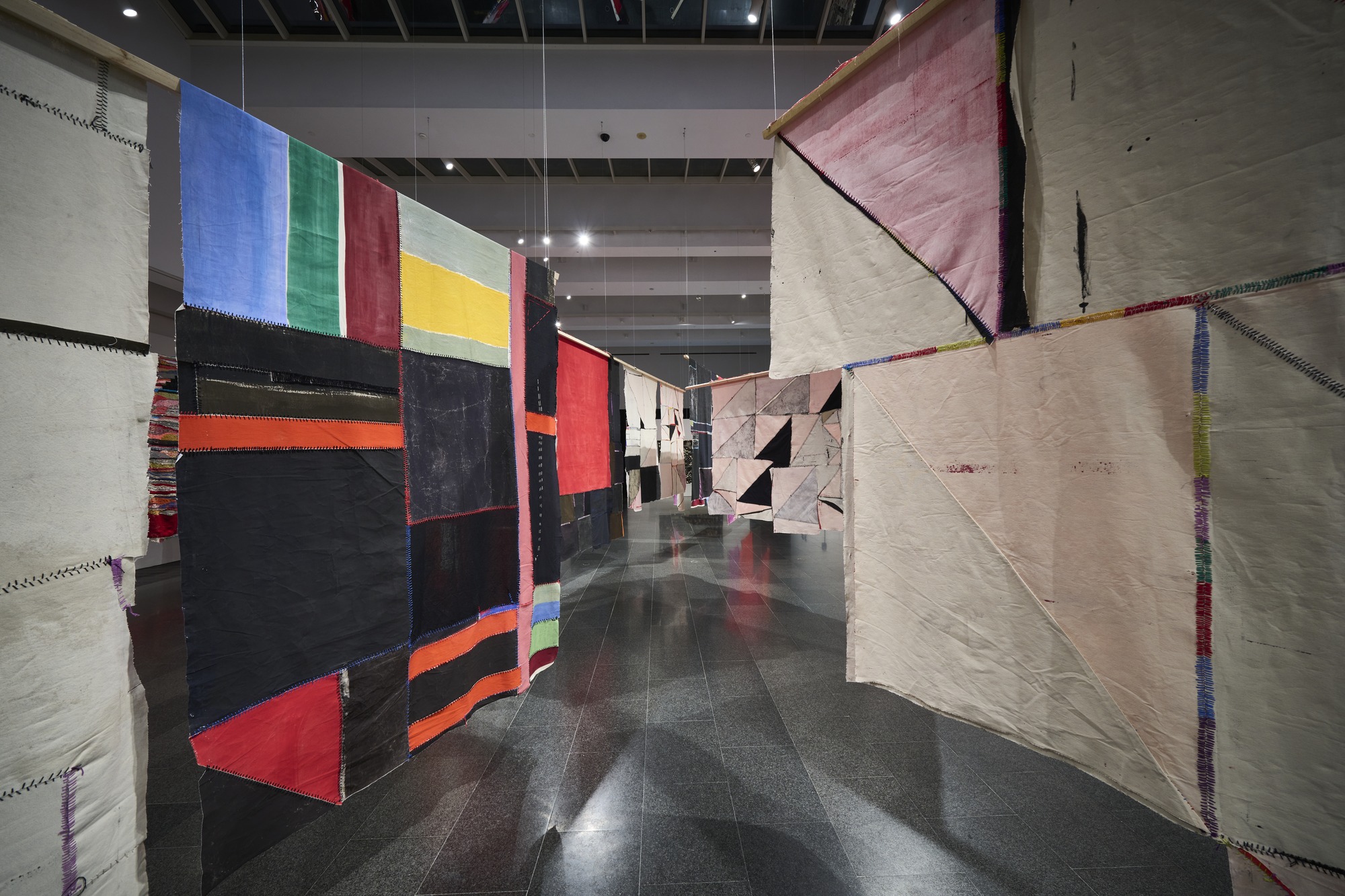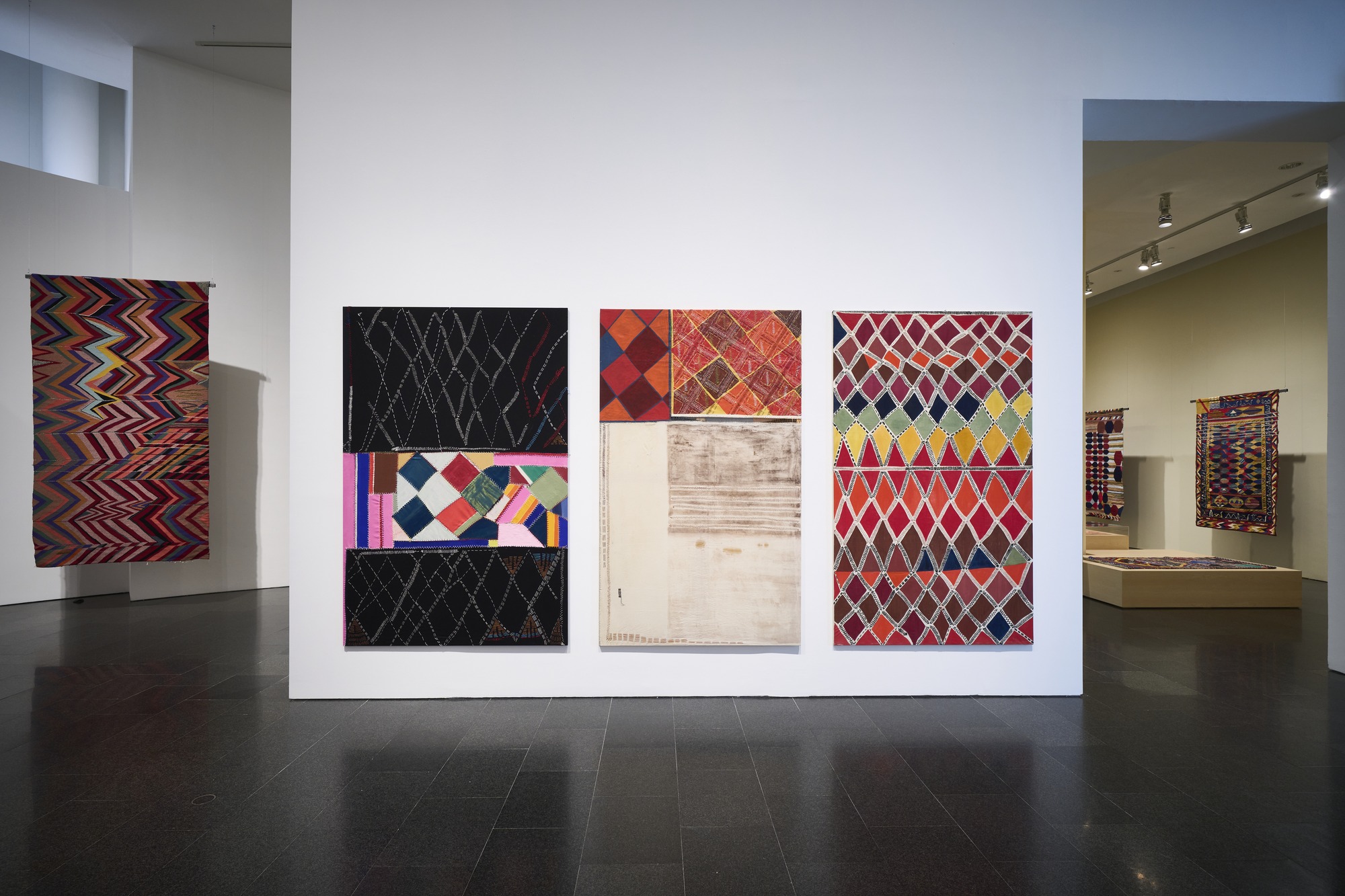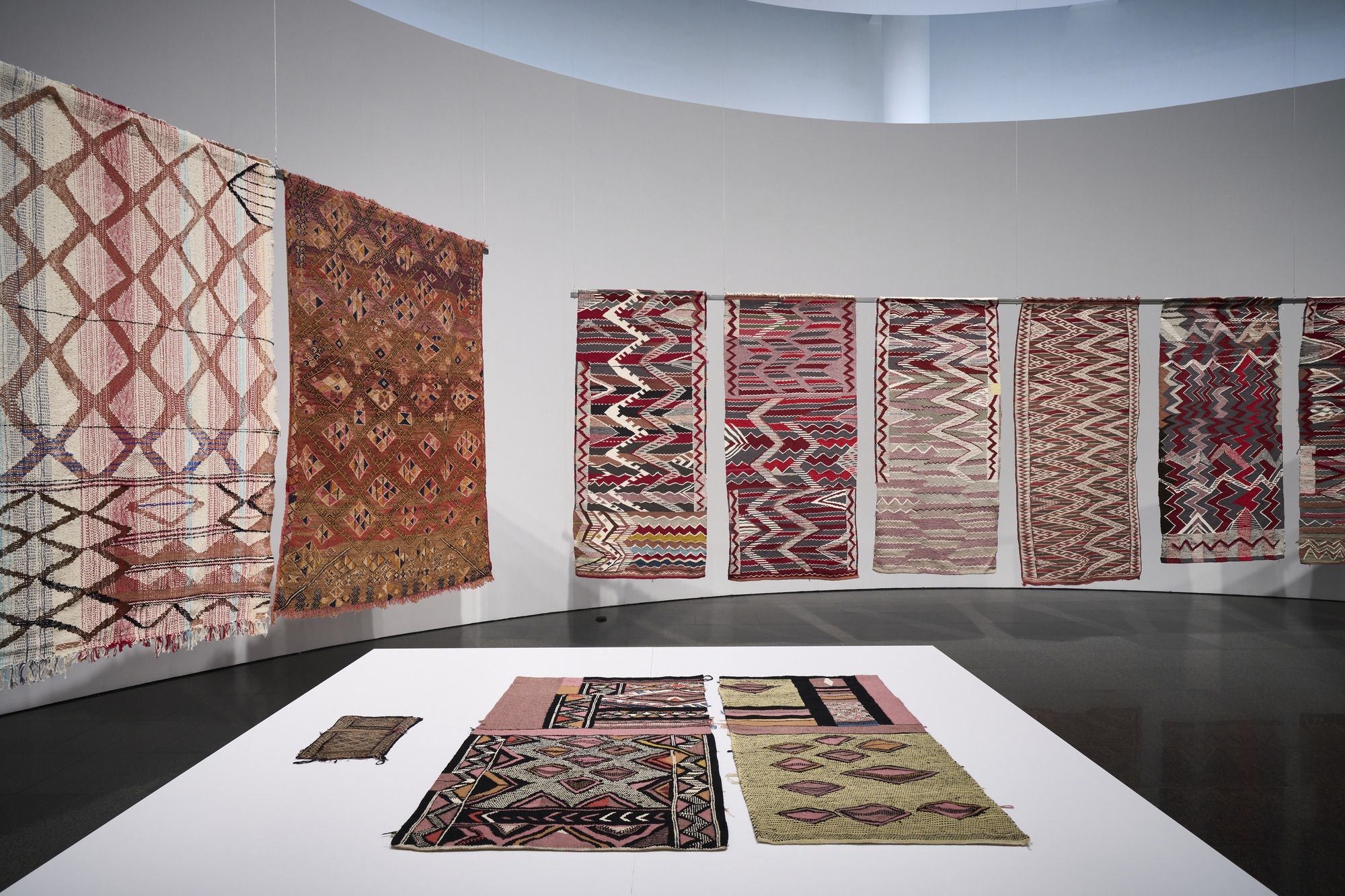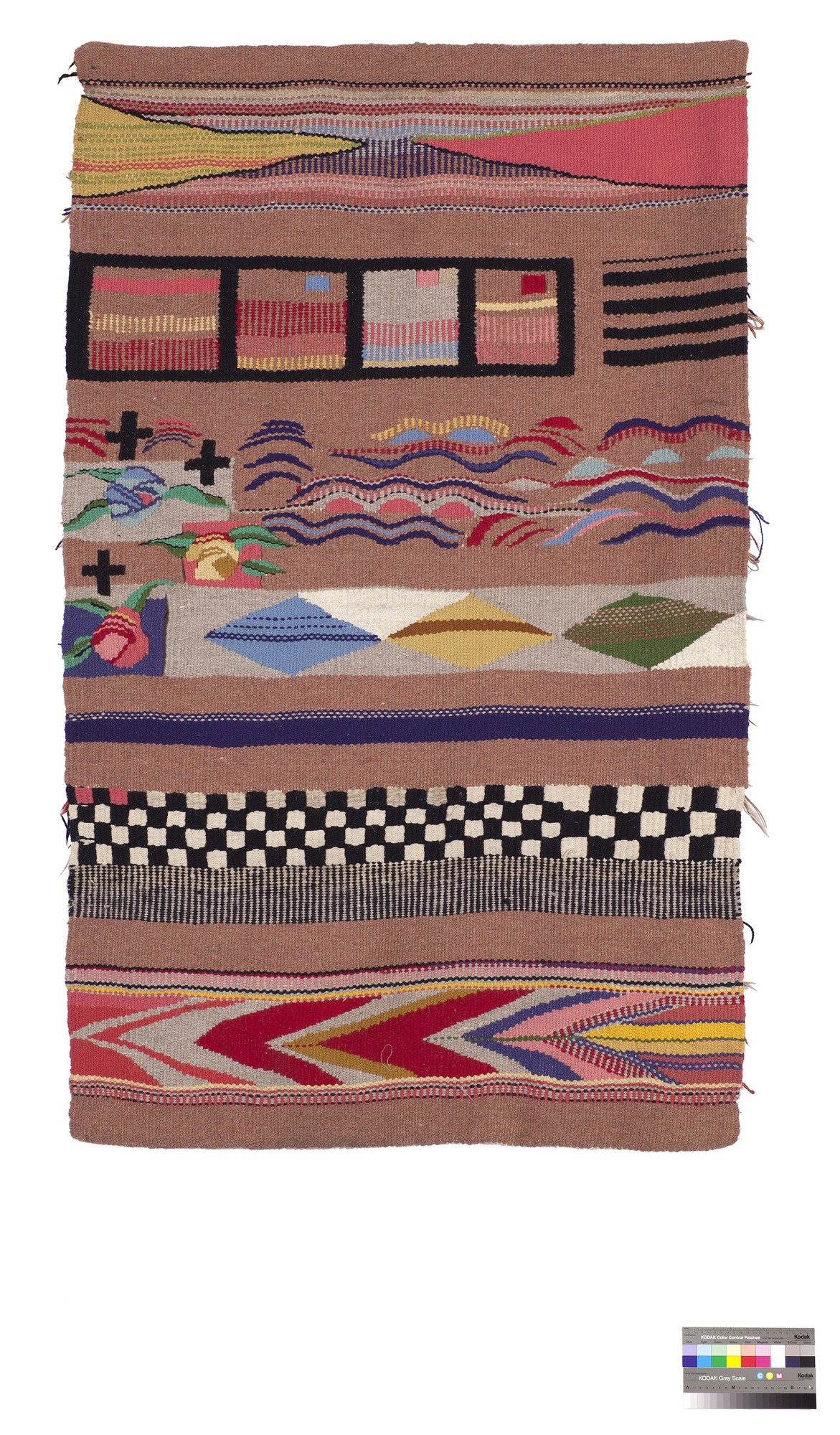Teresa Lanceta
Weaving as Open Source
08 Apr - 11 Sep 2022
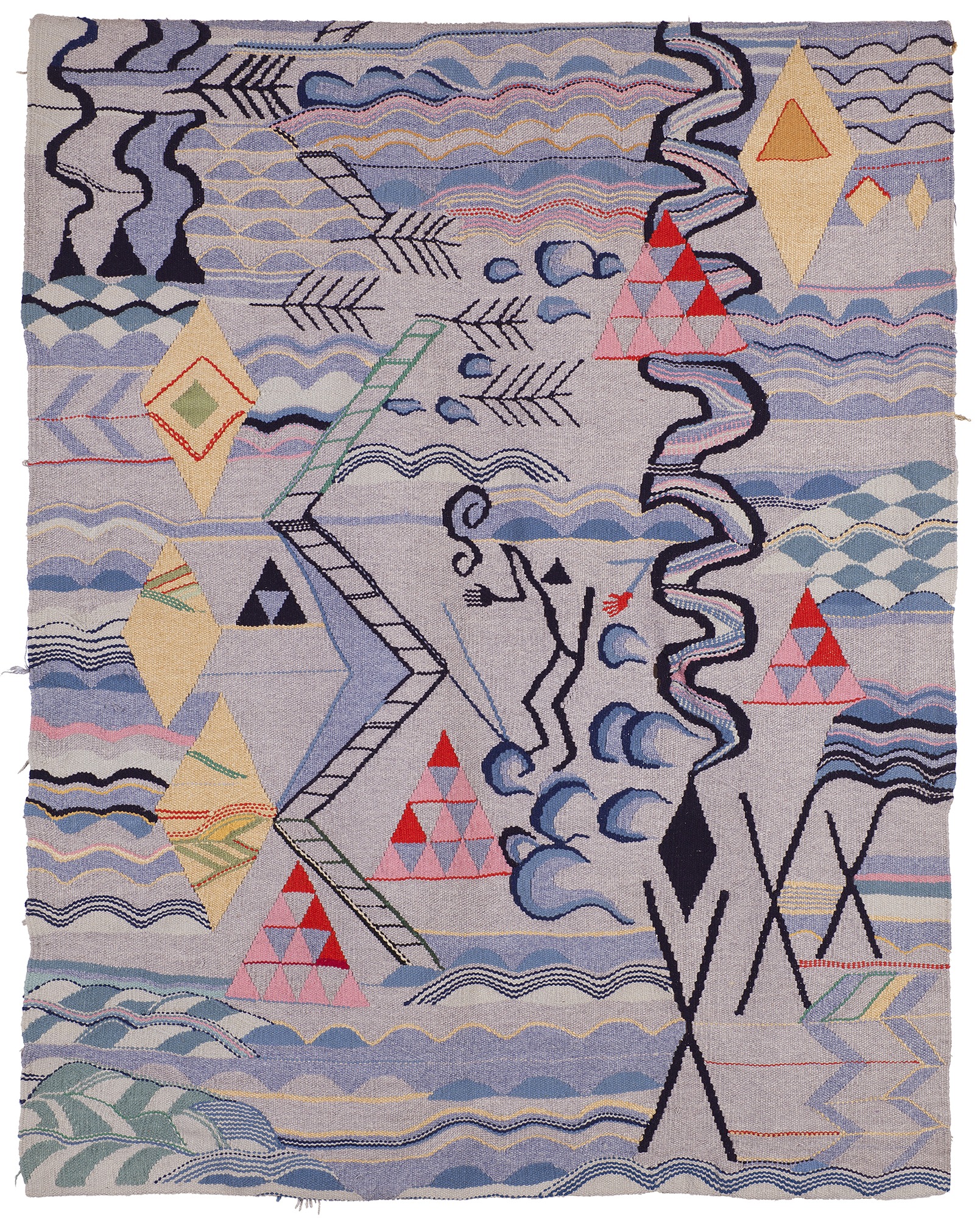
Teresa Lanceta
Subían y bajaban [They Went Up and Down], 1987
© Teresa Lanceta, VEGAP, Barcelona, 2022
© photo: García-Bautista
Subían y bajaban [They Went Up and Down], 1987
© Teresa Lanceta, VEGAP, Barcelona, 2022
© photo: García-Bautista
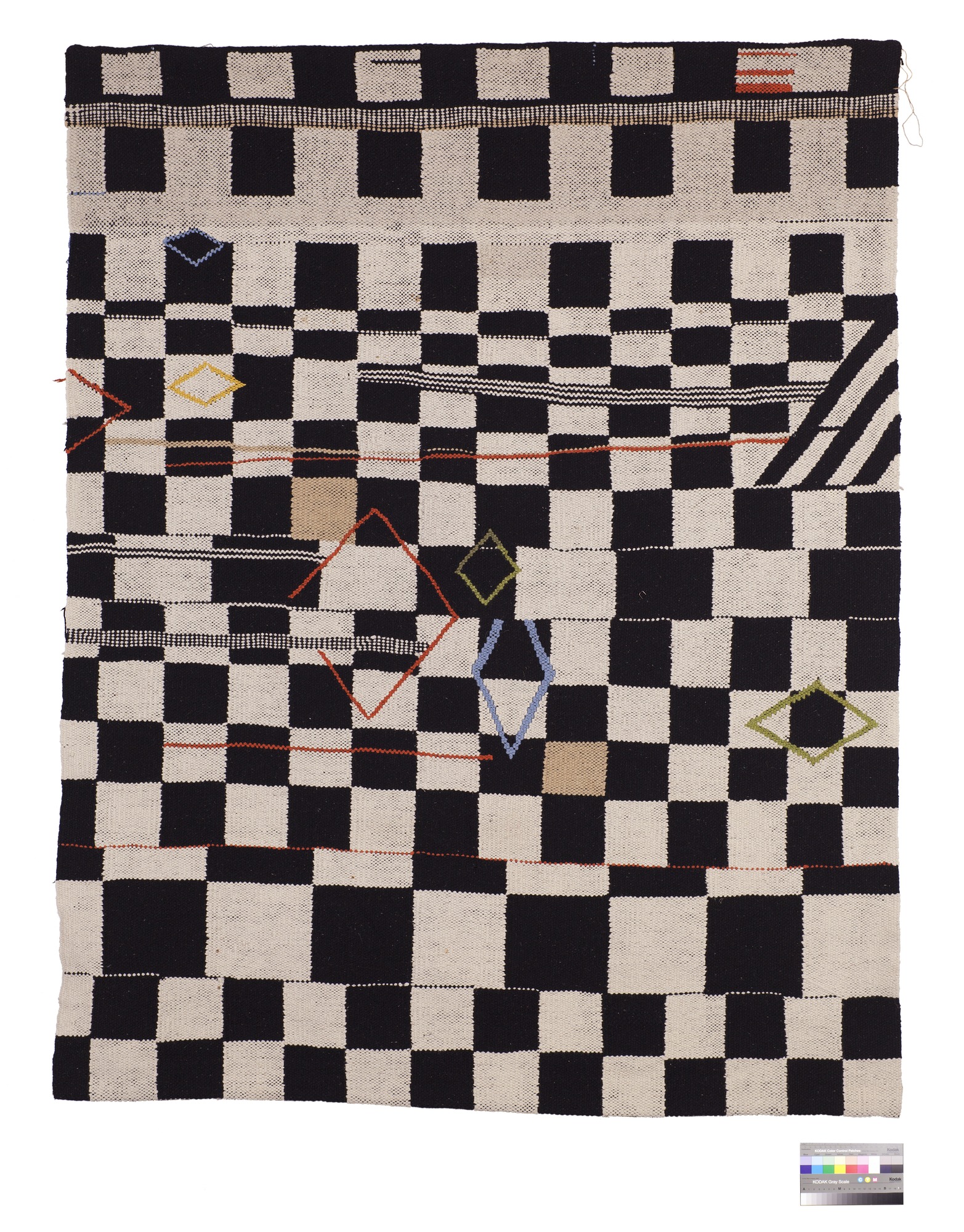
Teresa Lanceta
Cuadrados en La Palma [Four-sided Shapes in La Palma], 1994
© Teresa Lanceta, VEGAP, Barcelona, 2022
© photo: García-Bautista
Cuadrados en La Palma [Four-sided Shapes in La Palma], 1994
© Teresa Lanceta, VEGAP, Barcelona, 2022
© photo: García-Bautista
Weaving as Open Source, first retrospective exhibition of Teresa Lanceta at MACBA
► This exhibition brings together over 200 works by Teresa Lanceta (Barcelona, 1951) from the last five decades, including collaborative formats based around dialogues that she establishes with the help of ‘creative accomplices’, such as the artists Olga Diego, Pedro G. Romero and Xabier Salaberria; the curator Leire Vergara; the self-managed organisation La Trinxera; the filmmaker Virginia García del Pino; and the artist and software programmer Nicolas Malevé.
►Weaving as Open Source addresses Teresa Lanceta’s work and her approach to weaving, its structures, systems and processes, as a research method with symbolic, aesthetic, cultural and spiritual associations and, ultimately, as an art closely linked to life.
►While living with the Berber women from the Middle Atlas, she learned a universal art that has accompanied her throughout her long career, helping her to understand the time spent at the loom as a full-time occupation, and the significance of repetitive structures and geometries in the popular arts of many continents and in the twentieth-century avant-gardes.
►The Raval neighbourhood has had a long-lasting effect on Lanceta’s life and work. This is where she spent her formative years, sharing experiences with the Gypsy community, hence her need to talk about the things that are broken, destroyed or mended, and about the relevance of popular knowledge and experiences and life in common. A way of learning that reoccurred throughout her career, especially in the works of the 1990s and the series of red-and-black weavings from 2019 and 2020.
►The Trades in the Raval (2019–2022) is a collaboration between Teresa Lanceta, Nicolas Malevé and the students and teachers from the Miquel Tarradell secondary school and MACBA’s Education Department, consisting of a digital map reflecting the experiences, resources and emotional bonds of the participants and their families in their daily working lives.
►A significant programme of activities, running alongside the exhibition, will include an international seminar on the act of weaving and politics, the cycle of discussions Let’s talk about… Teresa Lanceta, and a special event for the Night of the Museums, conducted by Pedro G. Romero, among many other initiatives.
►Accompanying the exhibition will be a publication that, besides extensively documenting it, will resituate Lanceta’s artistic contribution within the hegemonic narrative of the last decades. Featured in the book will be essays by the philosopher Miguel Morey, the curator Bonaventure Soh Bejeng Ndikung and the anthropologist Bert Flint, as well as the curators of the exhibition and the artist.
►Teresa Lanceta. Weaving as Open Source is a co-production between MACBA Museu d’Art Contemporani de Barcelona and IVAM Institut Valencià d’Art Modern, and is curated by Nuria Enguita and Laura Vallés Vílchez.
‘An art that is relevant to life’ is how Teresa Lanceta (Barcelona, 1951) defines her approach to weaving: as a research method, and as a reader and interpreter of textile traditions in which weaving had symbolic, aesthetic, cultural and spiritual associations. Co-produced by IVAM and MACBA, this first retrospective exhibition of the artist brings together the widest selection to date of works produced over the last five decades. Including about two hundred pieces, the exhibition will demonstrate that, unlike other artists who have used weaving and its techniques to ‘bring it’ into contemporary art, Lanceta's commitment consists in affirming and showing that those weavings were also artworks. Just as Anni Albers admitted the importance that the ‘millenary weavers of Peru’ held for her, Lanceta found in the Middle Atlas other modernities that looked to the popular crafts of the present, to the inherited, to the everyday world of the senses and to a possible material representation of the unfathomable.
Art belongs to everyone and no one: it is in the ‘fine arts’ as it is in the popular arts, in crafts and in the socalled ‘minor’ arts, whose attitudes, aesthetic practices and customs constitute down-to-earth realities that have not been devoured by the discourse that, in the name of the singularity of art, separates artistic objects from everyday life. It is for this reason that Lanceta's work is presented in this exhibition in dialogue with a series of ‘creative accomplices’ with whom the artist has constructed a complex proposal that transcends the materiality of her work, delving into her performative and connective capacity
‘Of all the places I have lived, this place is the least comparable to any other. None has given me so much, and in none have I felt so at peace.’
Teresa Lanceta
TERESA LANCETA, THE RAVAL AND THE MIDDLE ATLAS
At the slightest opportunity, Teresa Lanceta emphatically affirms that ‘the Raval always gives much more than it receives’. She spent her formative years, from 1969 to 1985, in the Barrio Chino, as it was then known. In 1969, she began a History degree at the Universitat de Barcelona at the same time that she started to weave. Away from the academy and the Conceptual art of the time, Lanceta decided to weave as a political and aesthetic positioning, as a means of uniting different worlds. The Raval neighbourhood, very present in her work, was a mix of those connected to the port, blue-collar workers, migrants, gypsies and Andalusians. In short, a compendium of different ways of life – of cultures, even of religions – capable of adapting to the times without losing its own identity, which fundamentally has been and is to welcome people arriving from other places, regardless of their reason for coming. There, the experiences she shared with the Gypsy community gave rise to a reciprocity of affections.
At the beginning of the 1990s, after living for a time in Seville and Marrakesh, Lanceta settled in Madrid, but the memory of the Raval has always accompanied her in her work, making her feel the need to talk about the things that are broken, destroyed or mended. Even decades later, from 2013 to 2020, while based in Alicante, she travelled weekly to Barcelona to teach at the Escola Massana. In 2021, she continued her special relationship with the neighbourhood by initiating the project The Trades in the Raval, in collaboration with Nicolas Malevé, the students and teachers of the Miquel Tarradell secondary school and MACBA’s Education Department. The project consists of a digital map reflecting the experiences, resources and emotional bonds of the participants and their families in their daily working lives. It aims to reveal the multiple perspectives and trajectories converging on the Raval, a significant place for all, and show how work experience and skills get displaced when people move elsewhere to live.
All of this communal learning and rich life experience can be seen in Lanceta's construction of a popular narrative. Like Anni Albers in Monte Albán (Oaxaca) during her wanderings through various Mexican communities, the Raval and the Middle Atlas have left their mark on Lanceta, an artist who finds in the textile work of these communities a poetics of the world with which she can identify: traditional techniques that look to the popular crafts of the present, to the inherited, to the everyday world of the senses and to a possible material representation of the unfathomable.
The works presented in the five galleries poetically question concepts that in the past were considered antagonistic. For example, collectivity and authorship, traditionally understood through the exaggerated lens of the individual; remediation and history, or the capacity to negotiate pasts that are still uncomfortable today; performativity and matter, which puts labour in a space of shared experience of bodies and objects responding to conscientious work; and, finally, orality and biography, which highlights the feminist teachings by which art is a living practice. In this sense, Lanceta’s work is memorable: its critical potential lies in its ability to construct memory.
This broad selection of Teresa Lanceta’s works is presented in dialogue with a series of ‘creative accomplices’ with whom the artist has constructed a complex proposal that transcends the materiality of her work, delving into her performative and connective capacity. Lanceta understands the act of weaving as a critical activation of the imagination that goes beyond material limits. For her, weaving functions as an open source of repetition and rupture, from which a technical knowledge that is always complex and plural can be read, transformed and transmitted. It is an act that denotes a process prior to its culmination as an image.
In addition to The Trades in the Raval, a project by the artist Nicolas Malevé, together with MACBA’s Education Department, and the students and teachers of the Miquel Tarradell secondary school, the exhibition includes the contributions of the artists Olga Diego, Pedro G. Romero and Xabier Salaberria; the curator Leire Vergara; the self-managed organisation La Trinxera; and the filmmaker Virginia García del Pino.
► This exhibition brings together over 200 works by Teresa Lanceta (Barcelona, 1951) from the last five decades, including collaborative formats based around dialogues that she establishes with the help of ‘creative accomplices’, such as the artists Olga Diego, Pedro G. Romero and Xabier Salaberria; the curator Leire Vergara; the self-managed organisation La Trinxera; the filmmaker Virginia García del Pino; and the artist and software programmer Nicolas Malevé.
►Weaving as Open Source addresses Teresa Lanceta’s work and her approach to weaving, its structures, systems and processes, as a research method with symbolic, aesthetic, cultural and spiritual associations and, ultimately, as an art closely linked to life.
►While living with the Berber women from the Middle Atlas, she learned a universal art that has accompanied her throughout her long career, helping her to understand the time spent at the loom as a full-time occupation, and the significance of repetitive structures and geometries in the popular arts of many continents and in the twentieth-century avant-gardes.
►The Raval neighbourhood has had a long-lasting effect on Lanceta’s life and work. This is where she spent her formative years, sharing experiences with the Gypsy community, hence her need to talk about the things that are broken, destroyed or mended, and about the relevance of popular knowledge and experiences and life in common. A way of learning that reoccurred throughout her career, especially in the works of the 1990s and the series of red-and-black weavings from 2019 and 2020.
►The Trades in the Raval (2019–2022) is a collaboration between Teresa Lanceta, Nicolas Malevé and the students and teachers from the Miquel Tarradell secondary school and MACBA’s Education Department, consisting of a digital map reflecting the experiences, resources and emotional bonds of the participants and their families in their daily working lives.
►A significant programme of activities, running alongside the exhibition, will include an international seminar on the act of weaving and politics, the cycle of discussions Let’s talk about… Teresa Lanceta, and a special event for the Night of the Museums, conducted by Pedro G. Romero, among many other initiatives.
►Accompanying the exhibition will be a publication that, besides extensively documenting it, will resituate Lanceta’s artistic contribution within the hegemonic narrative of the last decades. Featured in the book will be essays by the philosopher Miguel Morey, the curator Bonaventure Soh Bejeng Ndikung and the anthropologist Bert Flint, as well as the curators of the exhibition and the artist.
►Teresa Lanceta. Weaving as Open Source is a co-production between MACBA Museu d’Art Contemporani de Barcelona and IVAM Institut Valencià d’Art Modern, and is curated by Nuria Enguita and Laura Vallés Vílchez.
‘An art that is relevant to life’ is how Teresa Lanceta (Barcelona, 1951) defines her approach to weaving: as a research method, and as a reader and interpreter of textile traditions in which weaving had symbolic, aesthetic, cultural and spiritual associations. Co-produced by IVAM and MACBA, this first retrospective exhibition of the artist brings together the widest selection to date of works produced over the last five decades. Including about two hundred pieces, the exhibition will demonstrate that, unlike other artists who have used weaving and its techniques to ‘bring it’ into contemporary art, Lanceta's commitment consists in affirming and showing that those weavings were also artworks. Just as Anni Albers admitted the importance that the ‘millenary weavers of Peru’ held for her, Lanceta found in the Middle Atlas other modernities that looked to the popular crafts of the present, to the inherited, to the everyday world of the senses and to a possible material representation of the unfathomable.
Art belongs to everyone and no one: it is in the ‘fine arts’ as it is in the popular arts, in crafts and in the socalled ‘minor’ arts, whose attitudes, aesthetic practices and customs constitute down-to-earth realities that have not been devoured by the discourse that, in the name of the singularity of art, separates artistic objects from everyday life. It is for this reason that Lanceta's work is presented in this exhibition in dialogue with a series of ‘creative accomplices’ with whom the artist has constructed a complex proposal that transcends the materiality of her work, delving into her performative and connective capacity
‘Of all the places I have lived, this place is the least comparable to any other. None has given me so much, and in none have I felt so at peace.’
Teresa Lanceta
TERESA LANCETA, THE RAVAL AND THE MIDDLE ATLAS
At the slightest opportunity, Teresa Lanceta emphatically affirms that ‘the Raval always gives much more than it receives’. She spent her formative years, from 1969 to 1985, in the Barrio Chino, as it was then known. In 1969, she began a History degree at the Universitat de Barcelona at the same time that she started to weave. Away from the academy and the Conceptual art of the time, Lanceta decided to weave as a political and aesthetic positioning, as a means of uniting different worlds. The Raval neighbourhood, very present in her work, was a mix of those connected to the port, blue-collar workers, migrants, gypsies and Andalusians. In short, a compendium of different ways of life – of cultures, even of religions – capable of adapting to the times without losing its own identity, which fundamentally has been and is to welcome people arriving from other places, regardless of their reason for coming. There, the experiences she shared with the Gypsy community gave rise to a reciprocity of affections.
At the beginning of the 1990s, after living for a time in Seville and Marrakesh, Lanceta settled in Madrid, but the memory of the Raval has always accompanied her in her work, making her feel the need to talk about the things that are broken, destroyed or mended. Even decades later, from 2013 to 2020, while based in Alicante, she travelled weekly to Barcelona to teach at the Escola Massana. In 2021, she continued her special relationship with the neighbourhood by initiating the project The Trades in the Raval, in collaboration with Nicolas Malevé, the students and teachers of the Miquel Tarradell secondary school and MACBA’s Education Department. The project consists of a digital map reflecting the experiences, resources and emotional bonds of the participants and their families in their daily working lives. It aims to reveal the multiple perspectives and trajectories converging on the Raval, a significant place for all, and show how work experience and skills get displaced when people move elsewhere to live.
All of this communal learning and rich life experience can be seen in Lanceta's construction of a popular narrative. Like Anni Albers in Monte Albán (Oaxaca) during her wanderings through various Mexican communities, the Raval and the Middle Atlas have left their mark on Lanceta, an artist who finds in the textile work of these communities a poetics of the world with which she can identify: traditional techniques that look to the popular crafts of the present, to the inherited, to the everyday world of the senses and to a possible material representation of the unfathomable.
The works presented in the five galleries poetically question concepts that in the past were considered antagonistic. For example, collectivity and authorship, traditionally understood through the exaggerated lens of the individual; remediation and history, or the capacity to negotiate pasts that are still uncomfortable today; performativity and matter, which puts labour in a space of shared experience of bodies and objects responding to conscientious work; and, finally, orality and biography, which highlights the feminist teachings by which art is a living practice. In this sense, Lanceta’s work is memorable: its critical potential lies in its ability to construct memory.
This broad selection of Teresa Lanceta’s works is presented in dialogue with a series of ‘creative accomplices’ with whom the artist has constructed a complex proposal that transcends the materiality of her work, delving into her performative and connective capacity. Lanceta understands the act of weaving as a critical activation of the imagination that goes beyond material limits. For her, weaving functions as an open source of repetition and rupture, from which a technical knowledge that is always complex and plural can be read, transformed and transmitted. It is an act that denotes a process prior to its culmination as an image.
In addition to The Trades in the Raval, a project by the artist Nicolas Malevé, together with MACBA’s Education Department, and the students and teachers of the Miquel Tarradell secondary school, the exhibition includes the contributions of the artists Olga Diego, Pedro G. Romero and Xabier Salaberria; the curator Leire Vergara; the self-managed organisation La Trinxera; and the filmmaker Virginia García del Pino.

